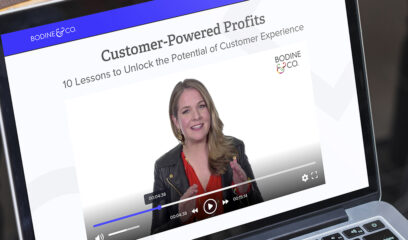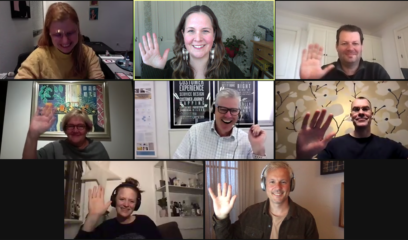It’s not often I hear news that makes me scratch my head for hours on end. But Adaptive Path’s announcement last week that they’ve sold to Capital One really got my wheels turning. Even Jesse James Garrett, Adaptive Path’s Chief Creative Officer, admits that the match is a weird one.
Here’s what’s rolling around in my head…
First and foremost, congratulations to my AP friends, both former and current, on this exciting news. You’ve all worked hard to get AP to where it is today, and no matter what your current position or path, I hope you’re sharing in some of the excitement.
Capital One competitors should be sweating. Design-driven business strategies offer a sharp competitive edge, and Capital One has snapped up some of the US’s best design talent. I can only imagine what the financial behemoth will do with AP… Perhaps it wants to take the reins in an industry that’s started to see significant digital disruption. Perhaps it wants to create new B2B or B2C service-based revenue models in the face of tighter government regulation. Whatever its plans, Capital One is well armed to position itself as an innovator and undisputed market leader.
AP leaders and employees win — in the short term, that is. I’ve often lamented that designers are underpaid in relation to the value they provide. The fact that AP sold to a company with such deep pockets gives me hope that Corporate America is starting to value design, and I hope this move pays off handsomely for the AP folks. In addition to the financial rewards, APers will gain valuable client side experience (both the joys and challenges of implementing something from start to finish). And, of course, there’s excitement and pride inherent in guiding an organization through the first steps of any new journey. But above all, AP employees now have the power to shape the future of the financial services industry in much the same way they shaped the Web as we know it today.
My big question is how long the honeymoon will last… Jesse’s post exudes the restrained giddiness that I’d expect from someone in his position. (After all, if the AP folks weren’t thrilled to pieces, they wouldn’t be entering into this agreement in the first place.) But I’ve seen — from both up close and afar — how such deals often work out in the end. Accenture’s acquisition of the agency Fjord started out with similar declarations of love and rainbows, but cultural differences have made for a bumpy integration and grumbling employees (many of whom have already made their way out the door).
In AP’s announcement, Jesse professes strong alignment in mindset and culture. But come on — we’re talking about a teensy San Francisco-based design agency and what Wired called “a banking concern that’s made an empire out of consumer credit card debt.” Yes, I understand buy naltrexone generic that the ostensible objective of the two organizations is to make people’s everyday lives better. But if the past is any indication of the future, Capital One exists to make a very small percentage of the population very, very rich. And I have to wonder how well this will sit with left-coast, designerly ideals in the long run.
Now, taking a broader look at the design industry…
Wired’s article covering the acquisition focused on AP’s role as a user experience firm and shaper of the Web 2.0 era. But over the last several years, AP has expanded far beyond digital. They’re arguably the most vocal agency in the areas of service design, customer experience, and design management — and their design consulting has focused on everything from call center interactions to science museum visits. There were few agencies in the US that had AP’s breadth and ability to look at all customer touchpoints.
And now there’s a gaping hole in the US service design industry. Who will fill it? AP’s roster of existing clients will need someone to turn for help. There’s a handful of Bay Area agencies that I’m sure would happily absorb work from local clients. But this deal will awaken service design pioneers from cities like London, Oslo, and Stockholm — and the path is paved for a European invasion. The European service design firms that haven’t yet crossed the pond may find that the barriers to entering the US market just got low enough for them to make a move. And those that have already set up shop in New York City will need to consider whether now’s the time to head west.
These moves will be important, because the US needs strong service design leaders. I’m thrilled to hear that the AP folks will continue to share their ideas through their blog and at their top-notch conferences — they’ve played a key role in helping to inform business leaders, middle managers, and potential clients about the value of design. But having AP out there actively competing for service design and customer experience projects was actually a good thing for other service design agencies, just as having Starbucks on a local street is actually good for independent coffee shops. AP raised the demand for design services and kept everyone on their game. The remaining players in the US service design industry will now need to focus not just on gobbling up AP’s client castoffs for some short term wins, but on reshaping the field so that service design and customer experience design remain highly visible and valuable.
To my friends at AP: Congratulations once again. I hope this is a fun and rewarding adventure for you all.
And to Capital One: You’ve got an amazing new asset that has the potential to change not only your organization, but the world. Don’t screw it up.




